An interview with ProRail’s Astrid Bunt: Train stations and their impact on passenger experience
Posted: 28 May 2020 | Astrid Bunt, Global Railway Review | No comments yet
In an exclusive interview with Global Railway Review, Astrid Bunt, Head of Stations at ProRail, explains how much of a role train stations play in contributing to the overall passenger experience.
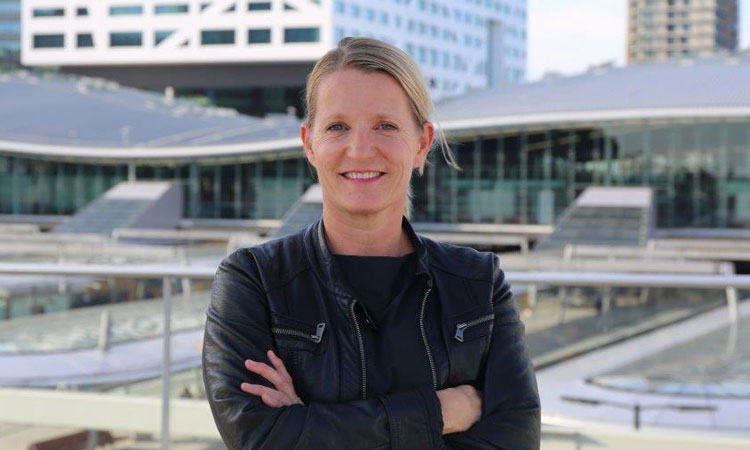

Astrid Bunt, Head of Stations, ProRail
Alongside being responsible for the rail network in the Netherlands, ProRail is also responsible for all 400 train stations across the country to ensure they are safe, clean, comfortable and easily accessible for everyone.
ProRail is dedicated to building new, and better, stations that are also sustainable. But to what extent do train stations contribute to the overall passenger experience?
In the Netherlands, approximately 30-35 per cent of the passenger experience is affected by how someone feels about their train station. And as we add more facilities to our stations, this becomes even more important for us to deliver.
“Train stations contribute a great deal to the overall passenger experience,” said Astrid. “In the Netherlands, approximately 30-35 per cent of the passenger experience is affected by how someone feels about their train station. And as we add more facilities to our stations, this becomes even more important for us to deliver.”
As such, Astrid explained how stations are evolving into becoming destinations. “Stations in the Netherlands, especially the bigger ones, have restaurants and shops, a cinema, plus residential buildings, hotels and office spaces right on our station doorsteps, and the facilities in and around our stations have a big effect on the overall traveller experience.”
Feedback and traveller insight
Communicating with customers to understand what they want from rail travel is an important element for any rail service provider, and for ProRail, this is no exception – especially in engaging with customers to understand what they want from train stations. Astrid explained how ProRail does this: “Together with NS Stations we measure and monitor customer satisfaction rates at our train stations each year, with roughly 150,000 customers taking part. Our biggest stations – those with more than 5,000 travellers each day – are measured every quarter, and smaller stations are measured every six months. Participants are asked a variety of questions on different themes, including safety, accessibility and cleanliness etc.”
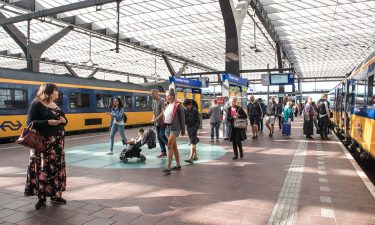

The Netherlands is expecting a 30-40 per cent growth in people travelling by trains, and therefore increased passenger footfall at stations.
This questionnaire gives ProRail valuable insight from travellers and how they rate different facilities and how this impacts their station experience. “This data allows us to analyse how each station is performing and gives us an indication about what we should do to improve facilities,” said Astrid.
But ProRail doesn’t rely solely on customer feedback, as Astrid explains: “Apart from daily inspection of the stations we also visit our stations with special interest groups and consumer organisations three times a year. These visits help us understand even better and in more detail what might need improving. We invite these parties to join us on these ‘inspection’ visits so we can take notes of what they think needs improving and what they would like to see change. Much of the time during these visits, the focus is on accessibility and to assess if people with visual and physical impairments would be comfortable travelling through the stations.”
This is obviously an incredibly important element for ProRail, as it aims to have an average score of seven out of 10 for customer satisfaction at all train stations.
Passenger growth
Just like many countries around the world, the Netherlands is seeing rail passenger numbers grow, so what plans does ProRail have in place to ensure that train stations will be able to cope with the future growth in passenger numbers?
We’re extending our platforms and adjusting our tracks at some stations to accommodate longer trains that will be required to operate to transport the expected increase in passenger numbers.
“We’re expecting a 30-40 per cent growth in people travelling by trains, and therefore increased passenger footfall at our stations,” explained Astrid. “We’re extending our platforms and adjusting our tracks at some stations to accommodate longer trains that will be required to operate to transport the expected increase in passenger numbers. But sometimes it isn’t possible to enlarge our train stations, so we do have quite a challenge ahead on how best to cope with rising passenger numbers at some stations.”
There are approximately 400 train stations in the Netherlands, and Astrid explained that each is ranked across seven areas, one of which is transfer capacity. “The way people transfer through our stations is very important and we need to provide enough capacity.” Another important one is the capacity for bike parking. “The Netherlands is well-known as being a cycling country, so bike parking facilities at our stations is crucial.”
We must be ready to accommodate the increase in travellers, so we need to identify where our gaps are and invest accordingly to make them better.
Together with the Netherlands’ Ministry of Infrastructure, Astrid explained how ProRail is very committed to improving rail travel and how they are working with all relevant stakeholders to make positive changes where needed. “We call it the ‘Vision for the Future, 2040’ and it sets out not only our plans, but also those of other public transport stakeholders, in how the Netherlands aims to be a world leader in public transport innovation and modernisation. We must be ready to accommodate the increase in travellers, so we need to identify where our gaps are and invest accordingly to make them better. And how do we do that? ProRail Stations and its partners have classified all 685 public transport nodes (bus/tram/metro and train stations) into seven specific categories, varying from public transport nodes in urban environments to public transport nodes in rural areas with the potential to accommodate regional transfers. A working group with all stakeholders involved chose one representative location (case study) for each category. These specific locations have then been assessed in greater depth with a new and unique method that has been developed in order to comprehensively assess the future performance of public transport nodes; the public transport action framework. This method assesses each location based on four 4 key aspects: people, node, place within network, and mobility, all in relation to current and future situations (The parties specify their wishes for the relevant node). The investments needed to future-proof the relevant node can then be derived from the resulting gap. The next step will be an in-depth assessment of the various potential solutions, including a cost estimate.”
Mobility-as-a-Service
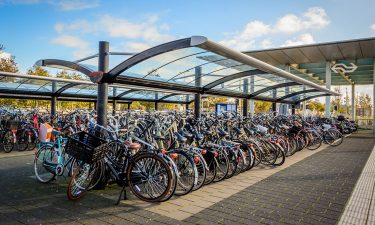

The Netherlands is well-known as being a cycling country, so bike parking facilities at stations is crucial.
When asked how train stations play a vital role in the Mobility-as-a-Service (MaaS) concept, Astrid explained how a variety of aspects must work in order for MaaS to succeed: “Smooth transfers between various transport modalities is a must, whether moving between a bus to a train, and then to your bike, the whole experience should be smooth and reliable. If one of those chains is broken, or if you’re not given updated travel service information, then you will lose an element of trust in the whole system. And let’s not forget comfort; especially if travellers are expected to use waiting areas within stations, they need to be comfortable areas at least!”
Passenger information and ticketing
Travellers are often subjected to a lot of information during their travel experience, so it is important that the communication they receive before and during their journey is clear and concise. Train stations play a huge role when it comes to displaying passenger information, but it is important that all stakeholders involved think and act in the interest of the traveller.
“I was in the UK lately,” explained Astrid, “and as a traveller I found it quite difficult to see where I could purchase tickets from, and then have clear information about which train company I needed to buy that ticket from. Some train operating companies (TOCs) seemed to be more focused on promoting their own brand, rather than thinking about how easy it is for travellers to get from A to B.
“Signage is also incredibly important; It needs to be a well thought through concept and system as a whole and I think that it should be the same everywhere. If you are at a train, metro or bus station, or if you are in London or Birmingham, the signage should be the same branding everywhere. It brings comfort and ease to the traveller.”
Technology
As the traveller experience evolves, technology will continue to play a big role. “User-friendly apps are so important,” explained Astrid. “I think an app that includes all modes of public transport is so important for passenger experience. In the Netherlands NS, our biggest TOC, has developed an app that has information of all public transport companies on it, even providing data to show how many bicycle spaces there are at certain stations and how many bikes are available at them to hire. In the future it will include car-sharing data too; the app is a brilliant user-friendly device.”
There is a lot of technology and digital solutions on the market that can help future-proof train stations, especially if stations can’t be extended to cope with increased passenger numbers, then sometimes alternative and innovative solutions need to be deployed.
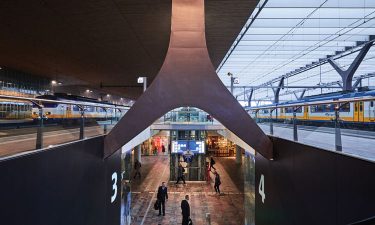

ProRail have already installed a lot of sensors within its stations to gather data on different aspects.
“We have already installed a lot of sensors within our stations to gather data on different aspects,” explained Astrid. “We have sensors within our elevators to alert engineers if they need fixing; if an elevator is broken it of course causes major problems – especially for wheelchair users which will negatively impact their travel experience. So, it is crucial we keep our elevators working so everyone can travel. Sensors also help us with general maintenance, for example de-icing and gritting activities at stations when the cold weather arrives. Sensors on platforms can measure and monitor the temperature and humidity outside to alert us when platforms need gritting as they could be very icy and slippery.”
Astrid moved on to explain that real-time sensor data has limitless possibilities for trains stations, especially how they could be applied to the design of future stations. “Sensors help us look at the behaviour of travellers and tell us how we need to control their movements within stations and provide real-time data on current station capacity.
“ProRail is currently working with Eindhoven University of Technology to study how sensors can track human walking behaviour and therefore help us predict foot traffic within a station and ultimately improve the efficiency within the station,” explained Astrid. “Another collaboration is between ProRail, NS Stations and the University of Amsterdam, on conducting scientific research on aspects such as how humans interact with wayfinding and station navigation. The research results will help us understand human behaviour and what can be applied to optimise mobility at stations.”
Station design
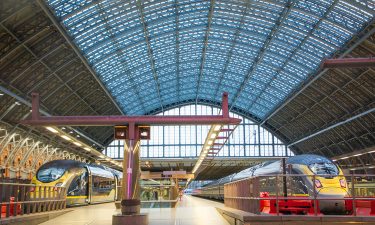

London St Pancras International Station
Station design also contributes to overall traveller experience, and with so many beautifully-designed train stations around the world, Astrid was asked which would be her favourite: “It is difficult to single-out just one of my favourites. Especially because there are so many, and I haven’t been able to visit them all! We all know there are some magnificent train stations in Asia but for example in Morocco recently five huge train stations were built, all beautifully designed and very luxurious; I have only seen pictures of these, but I am impressed with what I have seen. Closer, and one that I have visited several times, is St. Pancras International Station in London. I find it magnificent. It has been beautifully looked after and the craftmanship in design, building and maintenance is outstanding. I also find the people who worked at St. Pancras inspiring, as they talk so highly and with passion about their station’s design. In the Netherlands, my favourite is Rotterdam Central Station, which is not only iconic and ready for the future, it is also a gift to the city of Rotterdam.”
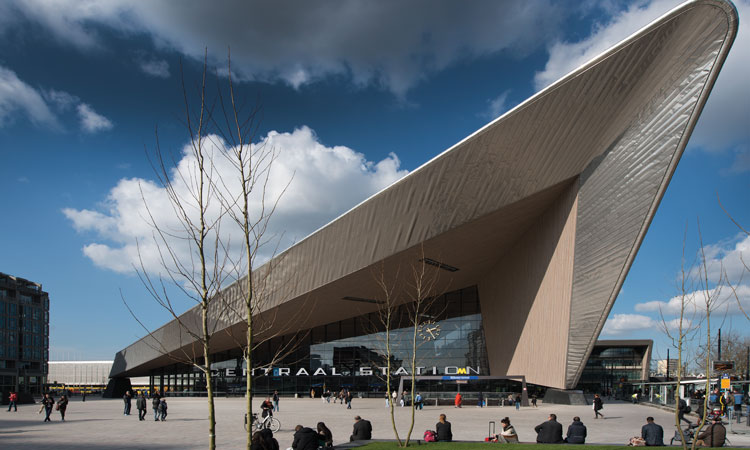

Rotterdam Central Station
Related topics
Apps, Big Data, Digitalisation, Mobility-as-a-Service (Maas), Passenger Experience/Satisfaction, Station Developments, Technology & Software








